Pantex Blog
People of Pantex: Bryce Garrett
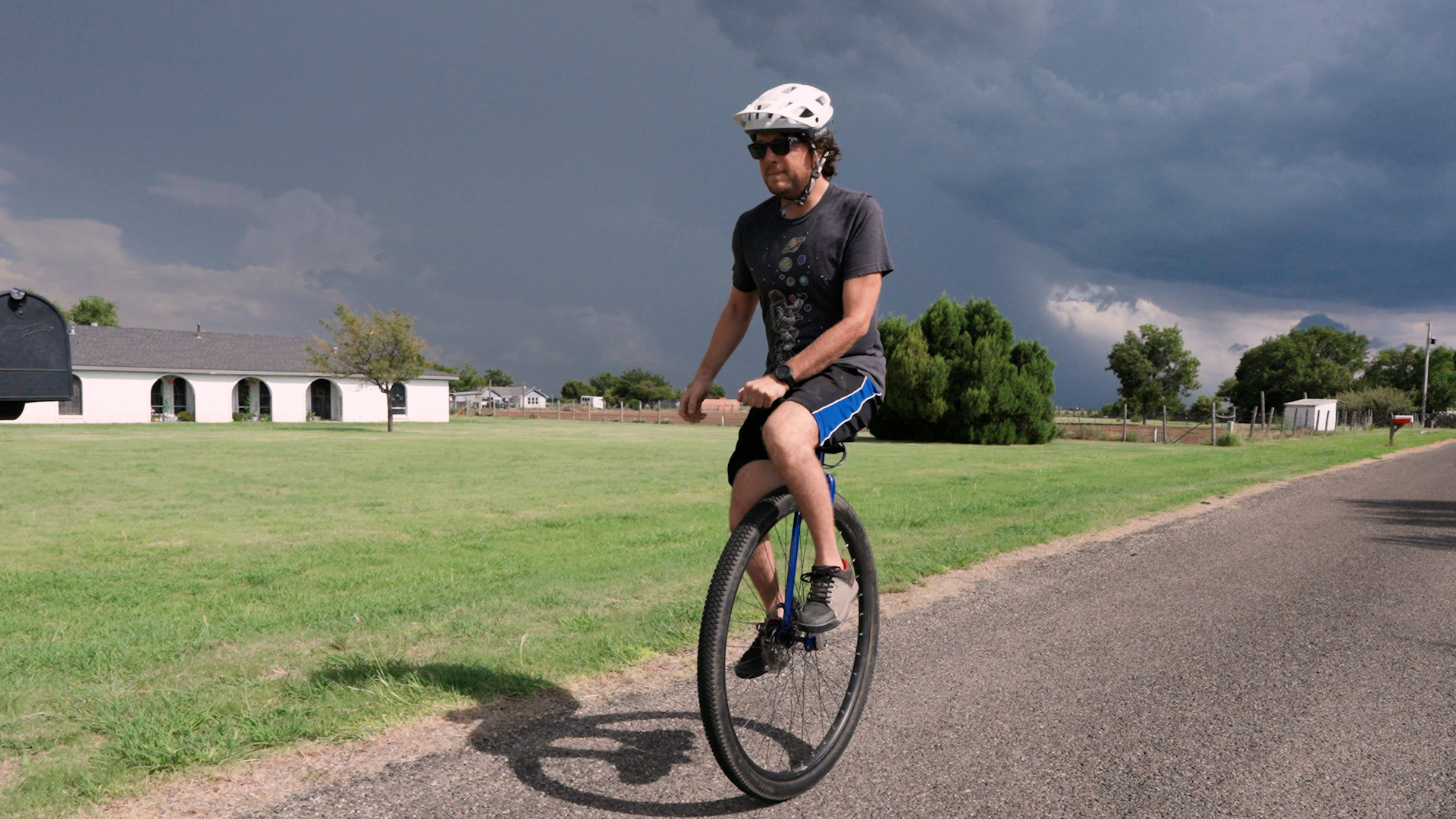
Bryce Garrett rolls through life on his unicycle.
Bryce Garrett didn’t choose the unicycle — the unicycle chose him.
While rummaging through the attic as bored teenagers, he and a friend stumbled upon his parents’ old unicycles and decided to ride their way out of boredom. Garrett practiced riding the unicycle next to a handrail and eventually graduated to riding unassisted at home. Not one for standing around and chatting at parties, he would ride now and again for audiences. After a few years, though, the unicycle was forgotten.
Fast forward to 2012, when Garrett was hit by a car while riding his motorcycle. The crash dislocated his left hip, left his calves paralyzed, and severed two of the three nerves in his neck that control his left arm. After a trip to the Mayo Clinic, doctors reattached the nerves, allowing him control of his arm again from his pinky to his bicep.
“My accident makes me appreciate coming to work,” Garrett said. “I know that sounds crazy, because when Monday morning rolls around, nobody really wants to go to work, myself included. Then I was at the Mayo Clinic and that was all I wanted. I wanted to be able to go back to work and do my job, because at that time, I couldn't.”
Despite the pain of recovery, Garrett knew that he had to get active for his physical and mental health, because both were slipping away from him. He tried running, but that was a no-go. Then one day his nephew mentioned the unicycle, and he decided to give it a shot. Once again, the unicycle chose him.
Turns out unicycling is like … well … riding a bike. Your body doesn’t forget how to do it. What Garrett wasn’t expecting was how difficult it would be to build up endurance. When he realized that unicycling was an option for him, it started a snowball effect. He decided one day that he wanted to ride the Lighthouse Trail at Palo Duro Canyon in Canyon, Texas. Once he realized he was capable of that, he set his sights on racing. He has since participated in several races, each of them special to him for different reasons, like 24 Hours in the Canyon, a bike race benefitting cancer survivors. Garrett is a record holder in this race for the fastest time on a unicycle. This past year, he rode 102 miles in a 24-hour period.
“These cancer survivors wake up every day and fight that fight,” Garret said. “Normally it’s meditative to ride … but during the 24 Hours event, I think a lot about them. It really fires me up to turn something that was very painful for me into something that can help somebody in a different situation. It's hard. It's difficult. And I push myself as hard as I can. But it's because I want to honor those people fighting cancer.”
Garrett started at Pantex in Infrastructure in 2018 as a mechanic and was recently promoted to a supervisor position. Riding a unicycle is not only a stress relief, but it has taught him the lesson of patience — and how to get back on the seat when things get tough. Those are the same lessons he tries to teach his daughters.
“I brought a cycle home and my wife laughed about it, but my daughters claimed it and I didn't argue,” he said. “So, now they have a unicycle.”
Three generations of Garretts have now kicked “the training wheel” for a singular hobby. Garrett picked up his parents’ unique unicycling, and as he tries to provide “a magical childhood” to his own kids, they have found a connection that most people wouldn’t dream of trying. Though fun might be the key motivator for starting to unicycle, it means much, much more to Garrett.
“It's kind of immeasurable how much it helped, really.” Garrett said. “Looking back, I was dealing with not being able to physically do some things I used to do. It made me realize that … I still have a lot of joy in life, and riding helped me gain my confidence back.”
Watch how Bryce chooses a hands-free approach to dealing with life's punches here:
Pantex Citizen: Jordan Gladman
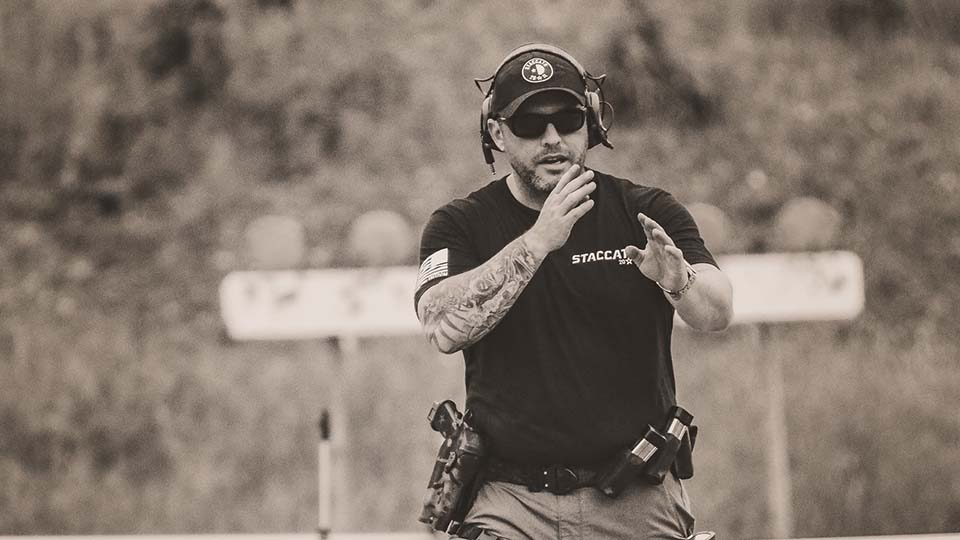
Jordan Gladman leads firearms training during a live-range exercise.
When Jordan Gladman steps onto the Pantex site, he is not just clocking in; he is stepping into a role that plays a critical part of our nation's security. As a Security Operations and Training officer at Pantex, Gladman serves as a Special Response Team captain and lead instructor for the Tactical Response Force Academy, where he is responsible for preparing newly hired security police officers (SPOs) for one of the most important jobs in the country — protecting the nation's nuclear deterrent.
“The team of lieutenants I work with daily are some of the most knowledgeable and highly trained officers on the Protective Force. All are considered subject matter experts in their respective fields, which makes their program one of the most respected in the complex,” Gladman said. “Without their experience, what we have accomplished with this program, would not be possible.”
His instruction covers critical areas like firearms, close quarter battle, active threat response, intermediate force combatives, emergency medical response, as well as case law and other topics. His leadership ensures that every new officer is not only technically and tactically proficient but also mentally prepared to respond to high–risk and high–stress situations.
That same dedication to readiness and safety does not end when he leaves the site. Recently, he was selected as an instructor for the Texas Tactical Police Officers Association (TTPOA), the largest SWAT association in the United States, that represents the best in law enforcement.
Gladman continued, “Being selected as an instructor for the TTPOA is a tremendous honor. It's a responsibility I take seriously because the skills we teach can quite literally save lives.”
This is a reflection on his national reputation as a trusted expert in tactical training, and highlights the level of respect he has earned across the country for his skills, professionalism, and dedication to developing those who serve on the front lines.
“I believe preparedness is a service to our community,” Gladman said. “Whether I'm teaching new SPOs at Pantex or working with law enforcement across the country, my goal is always the same: give people the skills and mindset they need to protect and respond with confidence under pressure.”
Gladman also owns Critical Advantage Training & Consulting, LLC, a company based out of Amarillo, offering a broad range of firearms and tactical training from large–scale law enforcement contracts to individual concealed carry classes designed for armed citizens who want to be confident and capable.
Gladman's roles all reflect a deep passion for service that goes far beyond job titles.
“I see my role at Pantex and Critical Advantage as part of the same mission – preparing good people to stand ready when it matters most,” said Gladman. “Whether it's protecting the nuclear facility or helping a community police department strengthen its tactical response, it
all comes down to the same core values: readiness, responsibility, and service.”
Gladman continued, “I believe in giving people the skills to problem solve at the speed of life.”
His commitment to training, leadership, and community outreach is a powerful example of how Pantex citizens make an impact both on and off the site. Through his work, Gladman demonstrates what it takes to be a true Pantex citizen.
Listen to Gladman's episode of the Citizens of Pantex podcast here.
If you are interested in volunteering opportunities or representing Pantex in the community, please reach out to Public Affairs at Public_Affairs@pantex.doe.gov.
Pantex Proud: Lindsey Irving
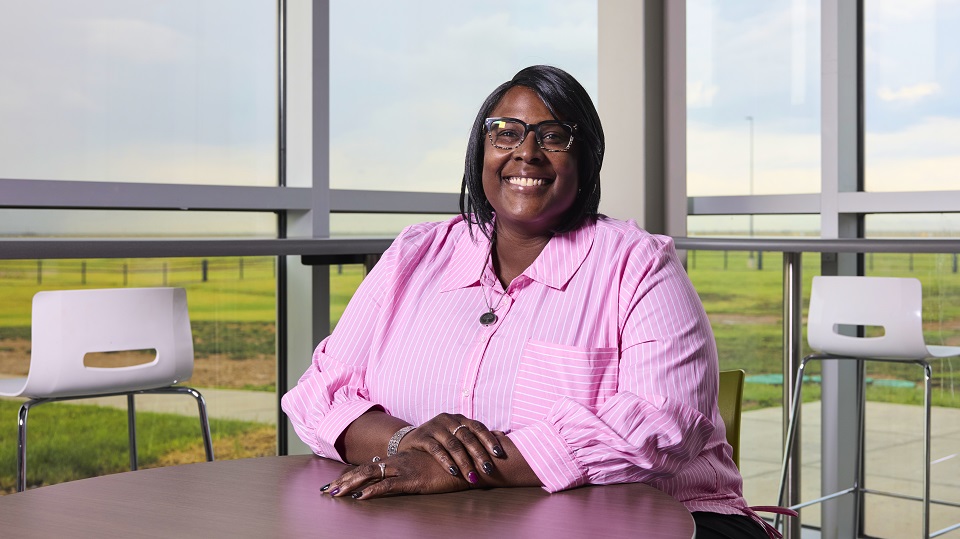
Thousands of dedicated Pantex citizens like Lindsey Irving work every day to support the Pantex mission. Take three minutes to learn about who she is, what she does, and why she is proud to be a Pantexan.
Pantex Service Desk Manager Lindsey Irving learned that if she wanted to be happy and prideful, she shouldn’t change, she should just be herself.
Irving’s grandmother and mother, two extremely independent, spirited women, taught her never to give in to other people’s expectations. With this mindset, Irving set out into the college-to-career world, fearlessly authentic, free to explore options.
“Picking a major and choosing a career path, was extremely stressful because I love to learn about pretty much anything and have so many interests,” Irving said. “My first degree was actually in Medical Technology. I often joke I still don’t know what I want to be when I grow up! I landed in IT out of pure chance, but it has been very rewarding.”
Irving left the medical field to work in special education for several years. From there, she migrated into the technology department, helping teachers integrate tech into their classrooms. While serving as IT Support Manager at River Road Independent School District, a similar position opened at Pantex, and she took her talents down Highway 60. Being part of the service desk team is one of Irving’s favorite aspects of her work environment, and it is also one of her proudest.
“Many people experiencing PC-related issues call the service desk first,” Irving said. “So, my team is on the front lines when it comes to providing support to our fellow Pantexans. We do our best to keep them up and running and to continue their daily tasks and, in turn, carry out the mission.”
On an individual level, Irving has some advice to all Pantexans, and she provides a glimpse of how she puts her guidance into action.
“Recognize the value you contribute to the mission, take pride in your work, and perform to the best of your ability,” Irving said. “For me, I’m focused on leading my team the best I can. I work to create a culture of supportiveness and to set a standard of excellence. We are learning and growing together.”
What is one thing your coworkers would be surprised to know about you?
About 10 years before she passed away, I met Ms. Rosa Parks during a motivational speaking engagement. Meeting her was incredible! Standing within a foot of a true icon was super surreal. It was an honest-to-goodness “wow” moment, something I will never forget. Tiny lady with a huge presence!
Why are communications important for all Pantex employees?
Pantex will be at 5,000 employees before you know it. With that many people, communication is critical because we all need to have awareness of expectations and situations in order to function as a unit. When it comes down to it, Pantex is one unit working toward the same mission.
What advice would you offer a new employee?
Get involved and treat everything like a learning opportunity. Asking questions is crucial. Lean on the knowledge and experience of the folks around you to help you solve problems and even use that to let new ideas take root.
From sole to soul: PXFD climbs for remembrance
Firefighters Jacob Frame, Joshua Brown, and Mike Kendrick climbed 110 stories to honor the 343 firefighters killed in the line of duty on September 11.
Three members of the Pantex Fire Department (PXFD) participated in the Kansas City 9/11 Memorial Stair Climb to honor the firefighters killed in the line of duty on September 11, 2001. Pantexans Joshua Brown, Jacob Frame, and Mike Kendrick joined hundreds of other firefighters from around the country to climb 110 stories to the top of the Skyline Collection high-rise in downtown Kansas City to memorialize the fallen.
“I climbed for those who never made it to the top,” Brown said. “For me, it’s about honoring the firefighters who gave their lives serving others and remembering the families they left behind. This is my small way of paying tribute.”
The Kansas City Memorial Stair Climb is one of many events across the nation specifically dedicated to honoring the first responders who lost their lives responding to the 2001 terrorist attack on the World Trade Center. Each climber is assigned a photo and badge of one of the 343 fallen firefighters who bravely ran toward danger to try to help others but never came back. Climbers ascend 110 stories, the height of the Twin Towers, in full gear to get the photo to the finish. The process involves climbing to the top of the Skyline Collection, taking an elevator to the bottom, and then restarting the climb multiple times to achieve all 110 stories. The stairwell route is plastered with pictures of the firefighters, their families, photos from that day, and various other pieces of memorabilia.
“It’s life changing,” Frame said. “Participating in an event like this is such an emotional roller coaster and it is a huge honor to be able to do it. It’s not a race — it’s an experience that takes time due to its overwhelming nature.”
Each firefighter carried not just the photo and the weight of their gear, but the enduring heroic legacy of the fallen and a promise to never forget. The climb represents 24 years of unwavering remembrance and ensures that the lives lost continue to be honored. At the end, Brown, Frame, and Kendrick rang a bell with a mixture of sorrow and pride, signifying they reached the top — an honor many were not afforded.
“The fire service is built on sacrifice,” Brown said. “This event comes at a cost: time off, travel, physical effort — but it’s worth it. Honoring them isn’t just tradition, it’s a responsibility. The men and women who ran into those buildings didn’t ask to be called heroes. They wanted to save lives. It’s on us to make sure their stories are told, and their legacies live on.”
The stair climb is one way Pantexans honor the fallen. A permanent memorial featuring a piece of the Twin Towers sits in front of the Pantex Fire Station beneath the American flag.
“Due to the memorial here being ever-present, it’s impossible to forget what happened that day,” Frame said. “September 11 is the perfect example of firefighters going to work and putting themselves in harm’s way for the sake of complete strangers. With so many people lost in one event, it has had such a huge impact on the fire service. Firefighters are happy to go to work for the sole purpose of helping strangers. It is truly an honor to be a part of the firefighter community.”
PXFD members play a critical role in supporting Pantex’s mission and demonstrate their commitment through community engagement. Whether assisting neighboring departments through mutual aid, leading training exercises, supporting local schools, or climbing 110 flights of stairs in remembrance of heroes, they take pride in representing Pantex well beyond the plant. With each step, PXFD not only honored the fallen but reaffirmed their own dedication to a profession defined by courage and bravery.
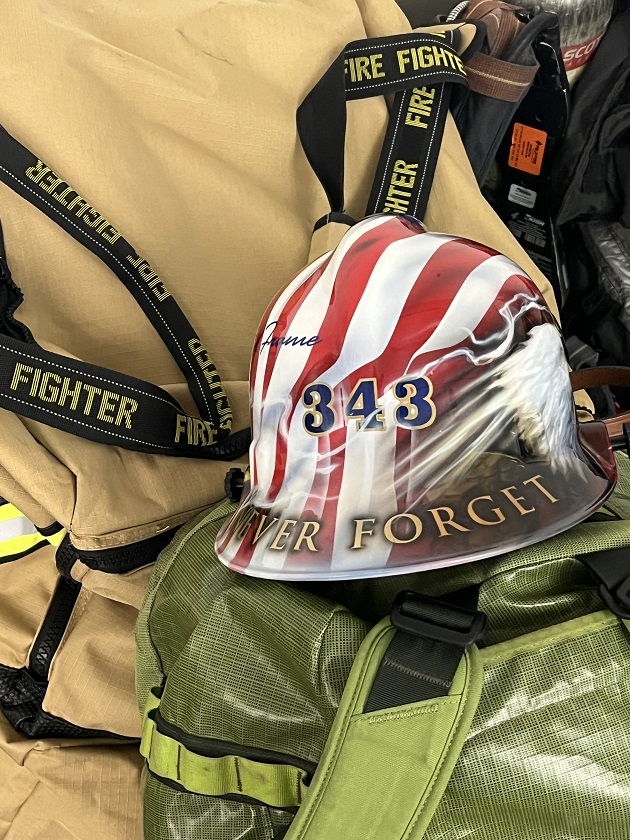
9/11 commemorative helmet
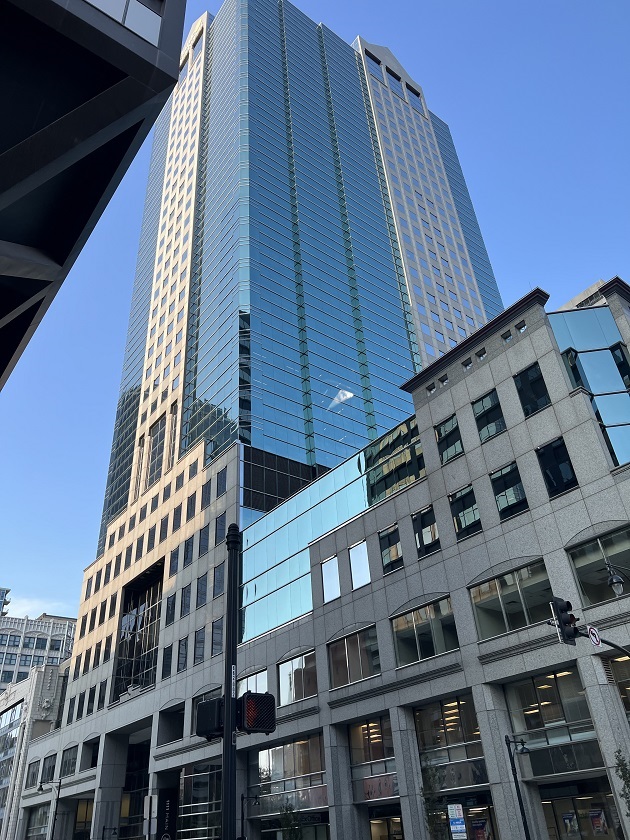
High–rise in downtown Kansas City
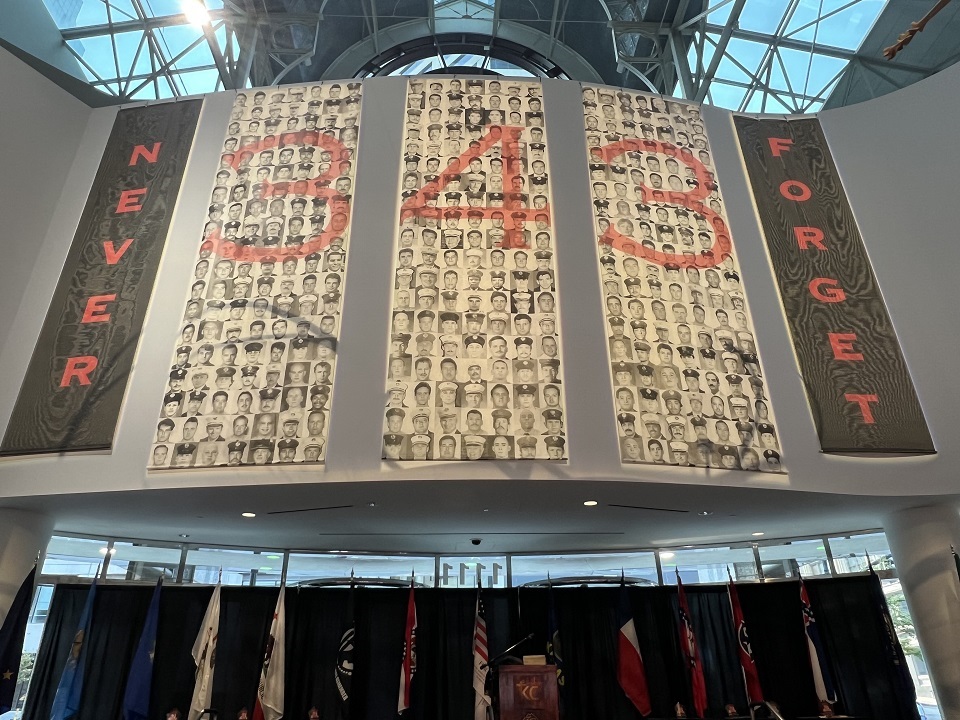
343 fallen firefighters mural
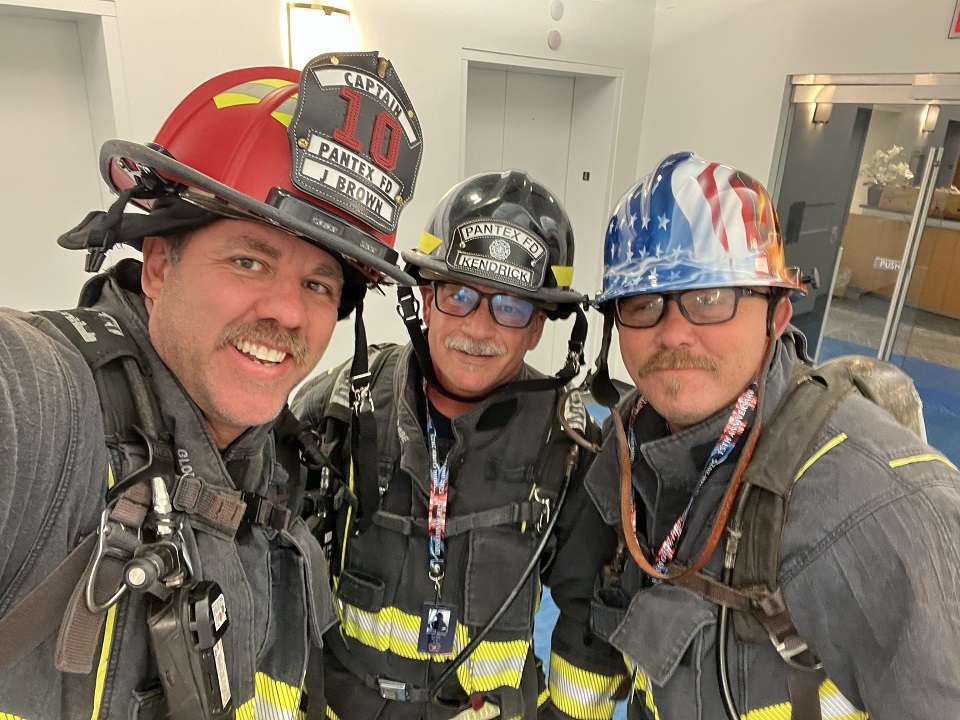
Firefighters Joshua Brown, Mike Kendrick, and Jacob Frame
Are you ready for it?

At Pantex, we normally don't prepare for thieves stealing hearts and never saying sorry, but we do plan for most other things. One way is by promoting National Preparedness Month in September — an annual Federal Emergency Management Agency (FEMA) campaign to encourage emergency readiness through education and awareness.
“The annual campaign is designed to ultimately better protect all of us by encouraging families and communities to start a conversation and create plans for emergency situations,” Emergency Preparedness Specialist Stacie Pahl said. “It's a reminder that setting aside the time now and taking in considerations while things are calm will allow for better decision making and improved response in an emergency.”
FEMA chose “Preparedness Starts at Home” as the 2025 campaign theme. Pantex uses this to tailor messaging specific to our workforce to ensure we are safe, proactive, and resilient in completing our mission.
“Preparedness transforms a workforce from a reactive state to a proactive and adaptable one,” Pahl said. “Fostering this safety culture builds the capacity to cope in emergencies and equips us with the ability to rebound stronger and operate effectively during significant challenges, which is
the hallmark of true resilience.”
Pantex's mission demands a proactive and vigilant mindset. This is accomplished by implementing stringent safety protocols and forward–thinking planning. Pahl says you can start planning at home by keeping an open line of communication like she does with her own family.
“Keep the conversation going,” she said. “Assess and prioritize needs, whether it be for children, elderly, pets, or medical. Make a family emergency plan, build a kit with basic emergency supplies, and secure your home. There are so many ways to prepare, it is just a matter of making the time for it now.”
To ensure 'Preparedness Starts at Home,' Pantexans should:
- Sign up for local emergency alerts
- Use weather radios during severe weather
- Prepare a kit for your family and pets including food, water, medications, flashlights, chargers,
identification, and important documents - Keep vehicles fueled and supplied
- Make an emergency contact list
- Practice your plan
When employees are prepared for emergencies on– or off–site, it strengthens their ability to continue Pantex's vital national security mission. Whether a severe weather event, a power outage, or any unexpected disruption, strengthening employee response at home reinforces safety at the site.
“It's important for people to prepare for a range of emergencies that could impact their safety — no matter the location or circumstances,” Pahl said. “Threats, hazards, and risks can differ depending on location and proximity of hazards. For instance, the Texas Panhandle doesn't typically experience earthquakes, hurricanes, or tsunamis. It's more probable for us to experience a wildfire, tornado, and flash flooding, so those are the situations we need to be prepared for.”
Don't wait until the middle of the night in your dreams to think about getting ready. Preparation is key to continuity and the safety and wellbeing of Pantexans. Before stocking up your vehicle with supplies, make sure not to include prohibited items. Pantexans are also encouraged to visit ready.gov to learn emergency preparation tips to keep yourself, your family, and your community safe.
